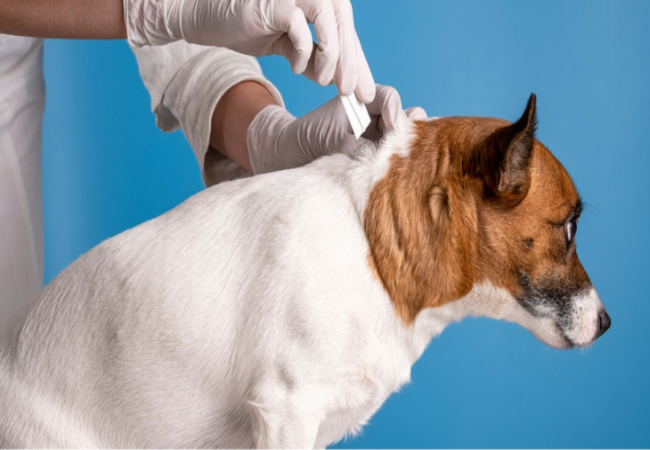When to Start Flea & Tick Prevention 2025: Vet Approved Guide 🐾

In this article
When to Start Flea & Tick Prevention 2025: Vet Approved Guide 🐾
By Dr. Duncan Houston BVSc
📅 Why Early Prevention Matters
Puppies are vulnerable to fleas and ticks, which can cause itching, anemia, tapeworms, Lyme disease, and other serious infections. Early prevention protects their health and shields your home from parasitic infestations.
⏱️ Ideal Start Age: 6–8 Weeks
- Most veterinarian-approved products—both oral and topical—are safe from 6–8 weeks of age.
- Capstar® (nitenpyram) is safe from 4 weeks, offering fast flea elimination for puppies ≥2 lb, but isn’t a long-term preventive.
- Certain products require puppies to be ≥6 months—e.g., Bravecto® oral/topical.
- Always follow label instructions, considering your pup’s weight and breed, and consult your veterinarian.
🧴 Common Puppy‑Safe Preventive Options
| Product | Age | Form | Protection |
|---|---|---|---|
| Capstar® | ≥4 wk, ≥2 lb | Oral tablet | Fleas only (24 hr) |
| Advantage Multi® | ≥7 wk, ≥3 lb | Topical | Fleas, heartworm, intestinal parasites |
| Simparica Trio® | ≥8 wk, ≥2.8 lb | Oral chew | Fleas, ticks, heartworm, worms |
| Frontline Plus®, Vectra 3D®, K9 Advantix II®, Credelio | ≥8 wk | Topical or oral | Fleas & ticks |
| Bravecto® | ≥6 mo | Oral/tablet | Long-term flea & tick |
Start with a vet-recommended product labeled for your pup’s age and weight.
🔍 Early Detection: Before Starting Preventives
- Use a flea comb nightly to look for fleas or flea dirt.
- Check and safely remove ticks—use tweezers, lift at skin level, store tick for testing if needed.
- Keep an eye out for irritation, redness, small bumps, or excessive scratching.
💧 Year‑Round Prevention & Risk Factors
- Fleas can survive indoors year-round; ticks may remain active in mild winters.
- Your vet will recommend year-round preventive care—even in colder seasons.
- Outdoor lifestyle, wooded areas, other pets, and local parasite prevalence increase risk.
🛡️ Safety & Choosing the Right Product
- Select products labeled specifically for puppies, noting minimum age and weight.
- Caution with isoxazoline class (e.g., Simparica, NexGard)—avoid if your pup has seizure concerns.
- Consider oral vs topical vs collars based on lifestyle—swimming dogs may prefer oral options.
- Always confirm correct dosage with your vet to ensure safety and efficacy.
📅 Timing: When to Give First Dose
- Give Capstar® at 4–5 weeks for flea outbreaks but follow up with a sustained preventive.
- Administer core monthly product (Advantage Multi®, Simparica Trio®, etc.) once the puppy hits the minimum age/weight.
- Set reminders for monthly dosing and renew collars every applicable duration (e.g., Seresto®—8 months).
🗂 Dr Houston's Flea & Tick Prevention Checklist
- 🟢 Start Capstar® if fleas are present at 4 weeks+
- 🟢 Begin main preventive (oral/topical/collar) at 6–8 weeks, per label
- ✅ Pick product based on local parasite risk and puppy lifestyle
- 🔎 Check daily for fleas/ticks before full prevention begins
- 📅 Continue monthly dosing year-round
- 📱 Ask A Vet available for product questions, side effects, or reaction concerns anytime
🌟 Final Thoughts
Starting flea and tick prevention at the right time—usually 6–8 weeks—and continuing it consistently is key to keeping your puppy safe and happy. Always confirm product age requirements, monitor for parasites early, and maintain regular dosing year-round. For personalized guidance tailored to your pup’s health and environment, visit AskAVet.com or download the Ask A Vet app. 📱🐾






